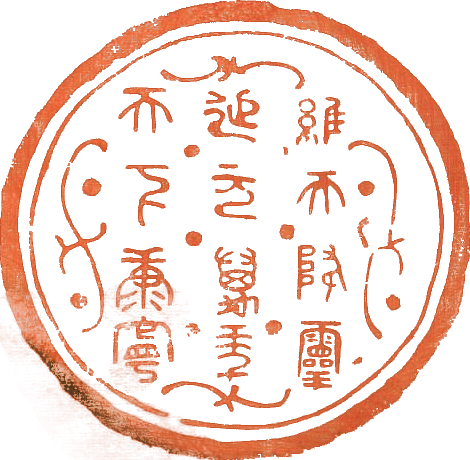Inhabitants
Tverkild , the beastfolk, make up the majority of the citizens of Tyr Sangta, around 90%. They are diverse in types and origin, and perform nearly all of the trades of the city, which are separated by Clan. Modern Tverkild speak Tverkilder. Tverkilder is somewhat of a super-language: in reality, there is no one Tverkilder, and it is the loose term for different languages and dialects spoken across the city. Ancestrally, the Tverkilder spoke dialects of Zneskilder and Sennkilder; different forms of Tverkilder are essentially pidgins of these languages where one or the other acts as a substrate. The dialects of Tyr Sangta range in their mutual intelligibility, while most kild can get along fine, there are some Clans known for being almost unintelligible.
Oni make up the minority of citizens in Tyr Sangta, at around 10% of the city-state's total population. Due to a series of laws known as the Sycz Laws, Oni are near forbidden from living in the city's limits and instead live outside in fortified villages known as syczes (pronounced sitch). Many work inside their villages, but those who do not work in the city as gendarme or as private guards. Oni speak Onihhara, their own language, but some learn dialects of Tverkilder as part of working outside of the sycz. Oni have radically different cultural beliefs and practices from the Tverkild, and some tension exists between the two groups as Oni largely exist as a militarized force.
History
Prehistory
Before and up to Saiverh, the Tverkild lived largely in slavery to the Sennkild and Zneskild. The Oni's independence as sovereign tribes was dwindling and they faced a similar fate in conscription to various bloody wars. The venerated man and aspect Tyr, a wolf Tver with one hand, is venerated for finally opening a tunnel through the once unpassable Dragon Bone Mountains, making the wild lands of the East finally accessible. As the empires of the West began to fall, many Tver and Oni, as slaves and soldiers, abandoned the West en masse. Their passage through the mountains to the new East is known in Tyr Sangta as the Long Walk.
The Settling of the City
Tyr led many from the Long Walk to a bay on the east coast, ultimately deciding the spot for the new city. The forming document of the city-state, signed by all those at the time who could read, is the Hundred-Clan Pact, which established the basic structure of the new city to be governed by Clans, Clan Lords, and a Lord-Emperor or Empress. A number of Tyr's policies have been fought over and controversial, such as the growing of the narcotic crop Umerha, the permissibility of old Western technology, and the allowance for a few Oni to settle in the city.
The Whaling War (krig th'gyozhira'jin-ne)
In the year 92, industry within the city was beginning to expand under fifth Lord-Empress Erh-Jie, who was notably liberal towards industrialization. However, the steel mines around the city began to exhaust, and a steel shortage stalled progress. Previous attempts to search the Heike Tal for new mines twenty years earlier ended in bloody defeats by the Heike Tal Oni, and the city was desperately looking for a new supply. A city-state to the north, Kiva-Hei, was a long time trade partner with Tyr Sangta, exchanging them whalebone curios as well as steel and whale oil, essential materials for Tyr Sangta. In the autumn month of Apple Blossom 92, Oni forces from Tyr Sangta began to assault the city over the land and sea. Though the war ended in the spring of the next year, it was a bloody war which left its mark on its veterans. Tyr Sangta continues to occupy the city for its whale oil and iron.
Clans
Almost all citizens of Tyr Sangta belong to a Clan. Clans operate similar to guilds, as they are a center for a skilled trade, but they are also larger family and social structures. Everyone is born into a Clan, and then expected to apprentice, take up either the Clan's main trade or any of the other jobs needed to run the Clan, and in turn receive room, board, and a small salary. Each type of labor or type of merchandise in Tyr Sangta is the propriety of a specific Clan, for example there is only one Clan allowed to do barrelmaking, or run a foundry. To this rule are only a few exceptions, which has often sown discord amongst different Clans. Two clans with similar trades may get into a dispute about who can sell what, or a Clan may be accused of doing its work poorly. Embargos from one Clan to another are not uncommon. Clans, at least externally, have a single leader: the Lord. The Lord represents the Clan at the monthly congressional meetings of the city meant to avoid mass conflict. Internally, Clans can have a variety of power structures, such as elder councils, trademaster councils, or wider democracy.
Calendar
In Tyr Sangta, time is conceived of in two eras straddling the year 0 of Saiverh: That Which Has Not Happened Yet ( on'tzet'dolla) and That Which Has Begun ( in'tzet'do ). They are currently on year 99 of That Which Has Begun. Each year has 13 months of 25 days each. Months have 5 sections of five days each, corresponding to the vueczi: earth, metal, water, air, and flesh. There are no ascribed days of rest as it depends on the Clan, but historically certain days were designated festivals. Hours of the day are divided into daylight hours and moonlight hours, which change depending on the time of year. Each day in the month has a prescribed amount of dawn hrs and dusk hrs, which shifts back and forth for a sum of 26 hours. So, for example, 6PM in Peach might be the 12th day hour, but in Sangta Rose it might be the 3rd night hour. (so they are stuck in a torturous cycle of endless daylight savings)
- The monthly cycle is:
- Plum ( ume ) - midwinter approaching spring
- Iris ( kyerh )
- Jasmine ( byamaikvyakka )
- Cherry ( szersza )- spring equinox
- Lotus ( jirue )
- Orchid ( czidakvyakka )
- Water Lily ( nimfa )
- Peach ( vyerh )- midsummer, summer solstice on 13th
- Pomegranate ( krahada )
- Apple ( akikvyakka )
- Ground Cherry ( szoko )- autumn equinox
- Camellia ( rzela )
- Bamboo ( drevtakke )
- Sangta Rose ( mei th'sangta ) - midwinter, winter solstice on last day


